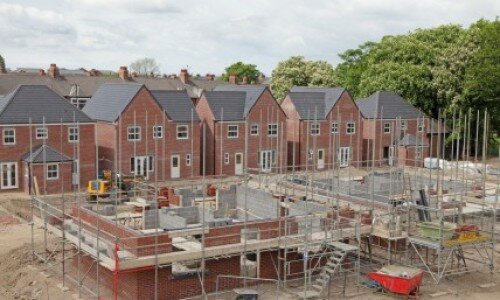
Birmingham bets on understanding neighbours in land bank bid for 29,000 new homes
All of the nine local authorities bordering Birmingham have been asked to identify vacant land to help the city address its acute housing shortage, it has emerged.
Planners at Solihull, Tamworth, Lichfield, South Staffordshire, Walsall, Sandwell, Bromsgrove, Redditch and Stratford-on-Avon are working with counterparts in Birmingham to identify every possible site close to the Birmingham border that might be developed.
The success or failure of these negotiations will determine how many new houses have to be built on Birmingham’s own green belt land in Sutton Coldfield.
Officials working on the Birmingham Development Plan, setting out proposed growth up to 2031, estimate that at least 80,000 new homes are required to meet population growth and address an existing housing shortage.
But even if all available brownfield land in Birmingham was to be developed only 45,000 new homes could be built, according to the council.
In addition, just over 5,000 homes may be built on green belt land to the east and north of Sutton Coldfield, bringing the maximum total new build for Birmingham to 51,000.
That leaves sufficient land for 29,000 homes to be identified, possibly across the Birmingham border in neighbouring council areas.
The figures are contained in the pre-submission version of the Birmingham Development Plan, which is undergoing statutory consultation. The plan will be challenged at a public inquiry later in the year.
Under the National Planning Policy Framework (NPPF), councils are required to plan to meet ‘objectively assessed’ needs for new housing, and employment.
The latest projections indicate that Birmingham’s population is growing at a faster rate than previously thought, and that there is an increasingly serious shortage of land available for employment development within the urban area.
As well as building homes in the Sutton green belt, the development plan envisages an 80 hectare employment site at Peddimore, to the north of Walmley. Both proposals involve building on land that has been the subject of fierce planning battles for decades and are certain to be the subject of intense opposition at the public inquiry.
An equally controversial proposal to build houses on part of the North Worcestershire Golf Course has been dropped, and the council has also declared it has no intention to develop the green belt Woodgate Valley area in south Birmingham.
Proposed areas of housing and employment growth are:
- Birmingham city centre
- Sutton Coldfield town centre
- Greater Icknield
- Aston, Newtown,Lozells
- Bordesley Park
- Eastern Triangle
- Selly Oak and South Edgbaston
- Longbridge
- Langley Sustainable Urban Extension
- Peddimore
Negotiations aimed at securing housing development land outside of Birmingham began under the city council’s former Conservative-Liberal Democrat coalition in 2010, and has continued since Labour regained control in 2012.
Conservative councillors remain sceptical about the claim that a maximum 45,000 new homes can be built on brownfield sites in Birmingham. Former cabinet housing member Cllr John Lines said he believed there were “thousands of acres” of brownfield sites available in the city, much of the land owned by public sector organisations.
Cllr Lines told the Edgbaston District Committee that discussions with neighbouring authorities could prove vital in pinpointing development land and enabling Birmingham to avoid building in the Sutton green belt.
Labour councillor John Clancy warned of “an absolute crisis” over the shortage of employment land in Birmingham. He added: “If we don’t identify enough land for new employment we could end up with a hollowed out city where there simply aren’t enough jobs.”
Background reports accompanying the Development Plan can be accessed at:
Documents include:
- An updated Strategic Housing Land Availability Assessment and Employment Land Review.
- A Study of Housing Delivery in the Green Belt Option Areas
- An Employment Land Study
- A Landscape Study of the Green Belt Option Areas
- A Transport and Accessibility Study of the Green Belt Option Areas
- An Archaeological Assessment of the Green Belt Option Areas
- An Ecological Assessment of the Green Belt Option Areas
- An Update of the Retail Need Assessment
Similar Articles
Eric Pickles announces £21m regeneration boost for Birmingham and the Black Country 2
Communities Secretary Eric Pickles, who is best known for slashing council budgets, has shifted into
£3,000 ‘golden hello’ payment plan for Birmingham social workers hits a glitch 6
A plan to make £3,000 ‘golden hello’ payments to social workers will have to be revised
Booming London makes case for devolution, but whose fingers are pulling the strings? 6
The debate about the size of London and its stranglehold over the UK economy has
Commissioner Jones and Andrew Mitchell clash over police stop and search powers 4
West Midlands Police Commissioner Bob Jones is at risk of upsetting some of his Labour
London basks in economic boom, while Birmingham ‘punches below its weight’ 8
Britain’s economic recovery is dominated by job creation in London, leaving cities like Birmingham, Manchester










